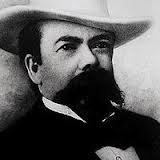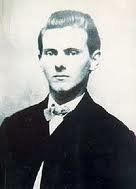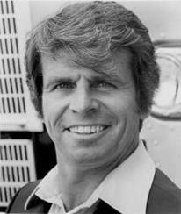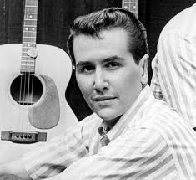
The United States Postal Service (USPS), also known as the Post Office, U.S. Mail, or Postal Service, is an independent agency of the executive branch of the United States federal government responsible for providing postal service in the United States, including its insular areas and associated states. It is one of the few government agencies explicitly authorized by the United States Constitution. The USPS, as of 2021, has 516,636 career employees and 136,531 non-career employees.
The USPS traces its roots to 1775 during the Second Continental Congress, when Benjamin Franklin was appointed the first postmaster general; he also served a similar position for the colonies of the Kingdom of Great Britain. The Post Office Department was created in 1792 with the passage of the Postal Service Act. It was elevated to a cabinet-level department in 1872, and was transformed by the Postal Reorganization Act of 1970 into the United States Postal Service as an independent agency. Since the early 1980s, many direct tax subsidies to the USPS (with the exception of subsidies for costs associated with disabled and overseas voters) have been reduced or eliminated.
The USPS has a monopoly on "letter" delivery within the United States and operates under a universal service obligation (USO), both of which are defined across a broad set of legal mandates, which obligate it to provide uniform price and quality across the entirety of its service area. The Post Office has exclusive access to letter boxes marked "U.S. Mail" and personal letterboxes in the United States, but has to compete against private package delivery services, such as United Parcel Service, FedEx, and Amazon.
On March 18, 1970, postal workers in New York City—upset over low wages and poor working conditions, and emboldened by the Civil Rights Movement—organized a strike against the United States government. The strike initially involved postal workers in only New York City, but it eventually gained support of over 210,000 United States Post Office Department workers across the nation. While the strike ended without any concessions from the Federal government, it did ultimately allow for postal worker unions and the government to negotiate a contract which gave the unions most of what they wanted, as well as the signing of the Postal Reorganization Act by President Richard Nixon on August 12, 1970. The act replaced the cabinet-level Post Office Department with a new federal agency, the United States Postal Service, and took effect on July 1, 1971.
In a 2006 U.S. Supreme Court decision, the Court noted: "Each day, according to the Government's submissions here, the United States Postal Service delivers some 660 million pieces of mail to as many as 142 million delivery points." As of 2021, the USPS operates 31,330 post offices and locations in the U.S., and delivers 128.8 billion pieces of mail annually.
The USPS operates one of the largest civilian vehicle fleets in the world, with an estimated 227,896 vehicles, the majority of which are the easily identified Chevrolet/Grumman LLV (long-life vehicle), and the newer Ford/Utilimaster FFV (flex-fuel vehicle), originally also referred to as the CRV (carrier route vehicle). Made from 1987 to 1994 and with no air conditioning, no airbags, no anti-lock brakes, and lacking space for the large modern volume of e-commerce packages, the Grumman fleet ended its expected lifespan in fiscal year 2017. The LLV replacement process began in 2015, and after numerous delays, a contract was awarded in February, 2021 to Oshkosh Defense to finalize design and produce 165,000 vehicles over 10 years.
It is by geography and volume the globe's largest postal system, delivering 47% of the world's mail. For every penny increase in the national average price of gasoline, the USPS spends an extra US$8 million per year to fuel its fleet.
The number of gallons of fuel used in 2009 was 444 million, at a cost of US$1.1 billion. The fleet is notable in that many of its vehicles are right-hand drive, an arrangement intended to give drivers the easiest access to roadside mailboxes. Some rural letter carriers use personal vehicles. All contractors use personal vehicles. Standard postal-owned vehicles do not have license plates. These vehicles are identified by a seven-digit number displayed on the front and rear.
The Department of Defense and the USPS jointly operate a postal system to deliver mail for the military; this is known as the Army Post Office (for Army and Air Force postal facilities) and the Fleet Post Office (for Navy, Marine Corps, and Coast Guard postal facilities).
In Fiscal Year 2021, the Postal Service had $77.06 billion in revenue and expenses of $81.99 billion with a net loss of $4.93 billion.
In July 2011, the USPS announced a plan to close about 3,700 small post offices. Various representatives in Congress protested, and the Senate passed a bill that would have kept open all post offices farther than 10 miles from the next office. In May 2012, the service announced it had modified its plan. Instead, rural post offices would remain open with reduced retail hours (some as little as two hours per day) unless there was a community preference for a different option. In a survey of rural customers, 54% preferred the new plan of retaining rural post offices with reduced hours, 20% preferred the "Village Post Office" replacement (where a nearby private retail store would provide basic mail services with expanded hours), 15% preferred merger with another Post Office, and 11% preferred expanded rural delivery services. Approximately 40% of postal revenue already comes from online purchases or private retail partners including Walmart, Staples, Office Depot, Walgreens, Sam's Club, Costco, and grocery stores. The National Labor Relations Board agreed to hear the American Postal Workers Union's arguments that these counters should be staffed by postal employees who earn far more and have "a generous package of health and retirement benefits".
Under the Mail Cover Program USPS photographs the front and back of every piece of U.S. mail as part of the sorting process, enabling law enforcement to obtain address information and images of the outsides of mail as part of an investigation without the need for a warrant.
In the early 1990s, widely publicized workplace shootings by disgruntled employees at USPS facilities led to a Human Resource effort to provide care for stressed workers and resources for coworker conflicts. Due to media coverage, postal employees gained a reputation among the general public as more likely to be mentally ill. The USPS Commission on a Safe and Secure Workplace found that "Postal workers are only a third as likely as those in the national workforce to be victims of homicide at work." In the documentary Murder by Proxy: How America Went Postal, it was argued that this number failed to factor out workers killed by external subjects rather than by fellow employees.
You won't find any red sauce here! Spaghetti Carbonara is a traditional Italian dish that's made with spaghetti pasta, bacon, and cheese. It's a creamy pasta dish that's kind of addicting. Once you try our easy recipe for Spaghetti Carbonara, we have a feeling you'll be having it a lot more often. It's super easy to make, and packed so full of flavor, you'll want to add this to your weekly menu!
- 1 (16-ounce) package spaghetti
- 8 bacon slices, cut into 1-inch pieces
- 1/2 cup chopped onion
- 1 clove garlic, minced
- 2 cups half-and-half
- 1/2 cup freshly grated Parmesan cheese plus extra for sprinkling
- 1 egg, lightly beaten
- 1/4 teaspoon salt
- 1/2 teaspoon black pepper
- 1 tablespoon chopped fresh parsley
- Cook spaghetti according to package directions; drain and keep warm.
- Meanwhile, in a large skillet over medium heat, cook bacon and onion 8 to 10 minutes or until bacon is crispy, stirring occasionally. Stir in garlic and remove from heat; drain off excess liquid.
- In a large pot, whisk together half-and-half, 1/2 cup Parmesan cheese, the egg, salt, and pepper. Heat over medium heat 3 to 5 minutes or until slightly thickened. Add spaghetti and bacon mixture to pot and toss until evenly coated. Sprinkle with Parmesan cheese and parsley and serve immediately.
Labor Day on first Monday of every September recognizes the men and women who labor to build this country. Through a time-honored tradition with roots in the coordinated efforts of the labor movement of the 1800s, we salute the American workforce.
Since the founding of the United States, the country has relied on its workforce for its infrastructure. From its streets and buildings to its transportation and security, the nation runs on labor. The labor of what we create, build and harvest fuels our education and inspires our dreams.
This National Day also signals the official end of summer. Those who work hard, need time to play, too. With the school year starting and summer winding down, the long weekend beckons. They use the extra day earned to spend with families and catch some R&R. Some will explore cities while others will seek outdoor adventure. No matter where it’s spent, it’s well earned.
HOW TO OBSERVE LABOR DAY
Many families spend Labor Day weekend on vacation. They pack the campgrounds full or explore tourist towns for one last hurrah! As you celebrate this day, consider and appreciate your hard work and how it has added to the well-being and prosperity of our country.
HISTORY OF LABOR DAY
On September 5, 1882, Labor Day first honored workers in New York City. The observance later moved to the first Monday in September in 1884. However, the observance wasn’t officially recognized by any government entity until 1885 when a municipal ordinance was passed. Interestingly, Oregon recognized the day in 1887 before New York state’s bill passed. As more states recognized the observance, its popularity grew. Then, in 1894, Congress declared the day to be a national observance.



















